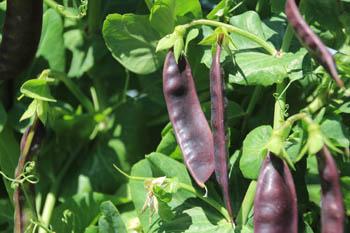
Some plants are best started as seeds in the garden while others should be transplanted as seedlings that you've started yourself or purchased from the garden center. Root crops like carrots, beets, and radishes should be sown as seeds as should corn and beans. Tomatoes, peppers, and eggplant should be planted as transplants. Some plants like squash and cucumbers can be planted either way. Direct SeedingWhen it comes to gardening, some plants prefer to be sown right into the soil. Corn, basil, lettuce, peas, spinach, zucchini, beans, melons, carrots, beets, and radishes are many that should be directly sown into the soil. Some of these plants have delicate roots systems and don’t do well in the transplant process, such as spinach, beets, and carrots. Others like radishes, beans, peas, and beets quickly germinate from seed. A benefit of direct sowing is the selection of seed varieties. With countless options in seed catalogs and garden stores, you can hand-select what you’d like to grow. The challenges with planting seeds right into your garden soil are important to consider too and require you to have a plan in place. Seeds are subject to the elements –rain, wind, and drought–as well as weed pressure. Following direct seeding and germination, you will want to thin your seedlings. This is the process of pulling out a few plants down the row to evenly space your crop to give them adequate space to grow. For example, carrots should be thinned to 2-3” apart and spinach 3-5” apart. When plants are too close together, they compete for nutrients, light, and water. Diseases can also become a problem when spacing is too tight. Transplants Establishment with transplants offers some great advantages to establishing a garden. By starting seeds indoors earlier, you are able to get a head start on the season as they mature much faster once planted in the soil. Plants that thrive best being transplanted include celery, eggplants, collards, kale, broccoli, kohlrabi, leeks, onion, peppers, scallions, Brussels sprouts, tomatillo, and tomato. Transplant establishment allows for succession planting –growing the same or other vegetable crops in the same garden space in a season –and will increase your harvest. For example, you can establish your first crop of lettuce with transplants followed by directly sowing seed every few weeks into your garden. By planting more mature plants into the garden, they have a stronger resistance to insect or disease pressures. Often insects prefer fragile, tiny seedlings, so transplants can help avoid this challenge. A downside for establishing transplants is the possible introduction of weeds into your garden. Producers are generally careful about the spread of disease from transplants, however, occasional weed seed isn’t uncommon. These unwanted seedlings are easily pulled by hand. Before planting transplants in your garden, you’ll want to harden them off by exposing them to the outdoor conditions increasingly over a week. Transplants grown in a controlled environment need gradual exposure to cooler temperatures, wind, and direct sunlight to avoid transplant shock.
- Vegetable Garden Seed Storage and Germination Requirements - G2090
- Leftover vegetable seeds can be used next year if stored properly. This publication covers how to select and store seed, and conduct germination tests.
- Understanding the Seed Packet - G1953
- This NebGuide helps gardeners better understand the information provided with a seed packet and how to use it when planning a garden.
- Starting Seeds Tips
- Nebraska Extension Assistant Mary Frogge talks about how to start seeds indoors.
